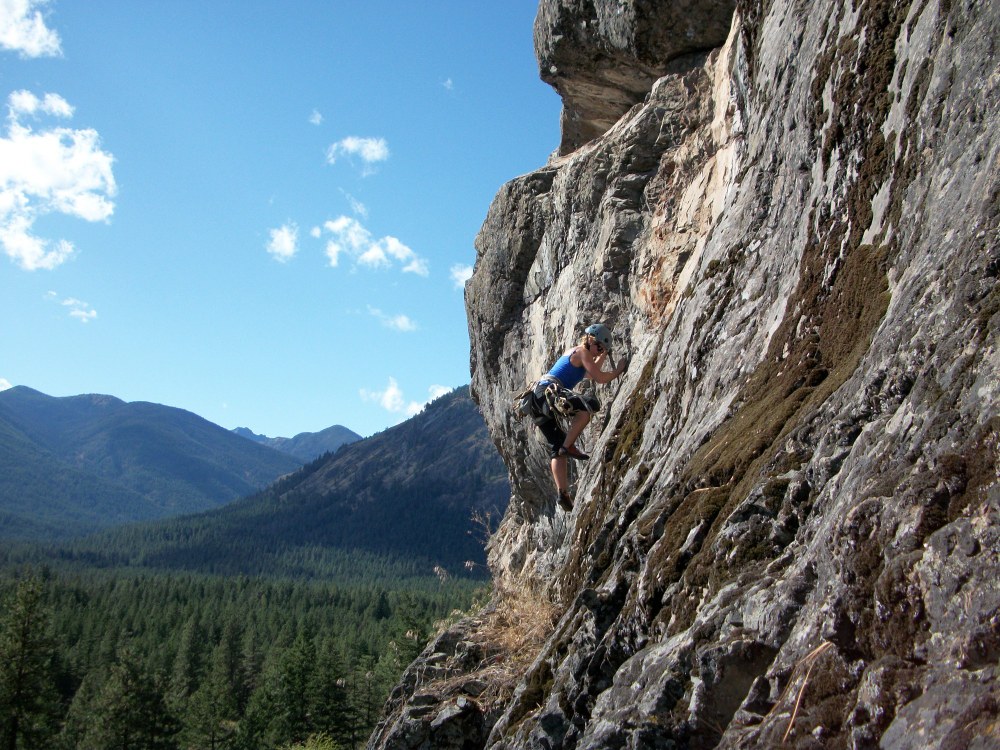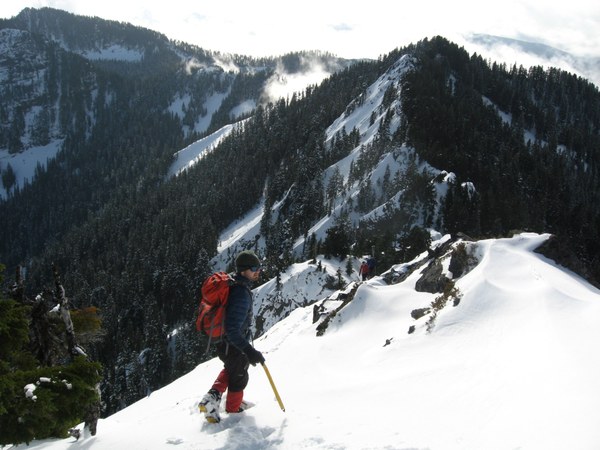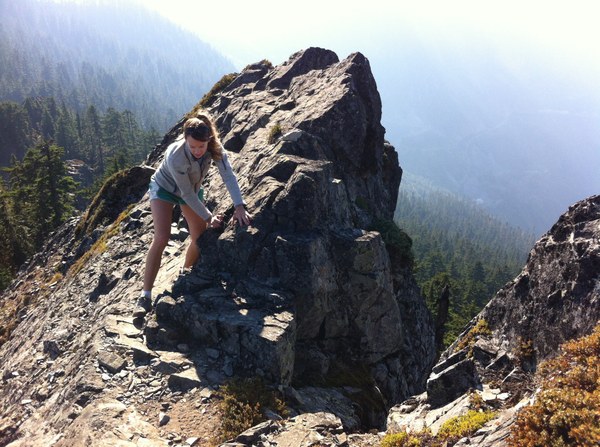
Cross-country skiing in the Methow. Climbing at Exit 38. Hiking at Ebey’s Landing. There's nothing like the amazing landscapes of the Pacific Northwest, and thanks to your advocacy, they are more protected than ever!
On March 12, 2019, the President signed a package of over 100 public lands bills. The final version of this legislation was renamed the John D. Dingell, Jr. Conservation, Management, and Recreation Act, in honor of the late congressman and conservationist. The package is the biggest of its kind to pass in the last decade, and is the result of significant bipartisan work, advocacy by The Mountaineers and our community of outdoor enthusiasts, and so many other organizations who care about public lands and the outdoor experiences they provide.
This milestone is the result of many years of work. Last fall we advocated for a bipartisan public lands package, which included many bills The Mountaineers helped to shape and subsequently rallied our community around. In the years prior, we advocated for three of the pieces included in the bill, including the permanent reauthorization of the Land and Water Conservation Fund (LWCF), establishing the Mountain to Sound Greenway National Heritage Area, and protecting the Methow Valley from industrial-scale mining.
 CLIMBING IN THE GREENWAY. PHOTO COURTESY OF THE MOUNTAINEERS.
CLIMBING IN THE GREENWAY. PHOTO COURTESY OF THE MOUNTAINEERS.
Our community took over 5,200 individual actions on these three issues, providing an authentic voice and repeatedly demonstrating strong support for these important conservation initiatives.
Through the public lands package failed to be passed in late 2018, Senators Lisa Murkowski (R-AK) and Maria Cantwell (DWA) promised to quickly pick things up in the new Congress of 2019. When the package came up for vote, Senate Majority leader Mitch McConnell (R-KY) spoke to the bipartisan effort that was behind it. “The lands bill is the product of over 100 pieces of legislation addressing the management and preservation of some of our nation’s most precious natural areas. It touches every state, features the input of a wide coalition of our colleagues, and has earned the support of a broad, diverse coalition of many advocates for public lands, economic development and conservation."
In a time when we’re seeing little compromise and cooperation in Congress, the American people’s overwhelming support for public lands transcended party lines: the bill passed both the Senate and the House with significant majorities. We appreciate Washington’s own Senator Cantwell championing the LWCF and the Pacific Northwest measures in the package, and the bipartisan work with her senate counterpart Senator Murkowski that helped make all this possible.
Many organizations and advocates around the country rallied around these regional and national conservation projects and initiatives, like you did for ours in Washington State. American Whitewater worked hard for the Wild and Scenic Rivers protections, and we supported the Access Fund on protections for climbing in Wilderness Areas. Our partners in the Outdoor Alliance cared for and worked on many projects nationwide, and it’s great to see so many initiatives pass as a part of this package.
Achievements like this require the constant voice of public lands champions. The Mountaineers community highlighted the importance of the outdoor experience to legislators, who listened. Washingtonians can take pride that our state’s entire delegation – all the House Representatives and both Senators – voted for this bill. We’re extremely grateful for the work of our partners and other recreationalists around the country who supported the bill, and we are thankful for the work our community put into this. This type of policy action isn’t possible without citizens stepping up and making their voices heard. To the thousands of you who took action on these issues – thank you, thank you, thank you!
 Scrambling in the Greenway. Photo courtesy of The Mountaineers.
Scrambling in the Greenway. Photo courtesy of The Mountaineers.
Specific protections to celebrate
Methow Headwaters
The journey to get the Methow Headwaters permanently protected included many steps leading to the successful passage of the Methow Headwaters Act. In April 2014, a Canadian Company, Blue River Resources, filed for permits to conduct exploratory drilling for copper on Flagg Mountain on U.S. Forest Service land, immediately north of Mazama. If approved, it would have opened the Methow Valley’s federal lands to large-scale mining. After a two-year mineral withdrawal was issued, we then supported a 20-year withdrawal that was still being discussed in the fall of 2018. Thanks to the public lands package, we no longer have to worry about the threat of mining in the Methow Valley, as the bill permanently withdrew the valley from large-scale mining.
Mountains to Sound Greenway
The Mountains to Sound Greenway is a 1.5 million-acre watershed stretching from Seattle to Ellensburg. It runs as far north as Snoqualmie and Lake Washington and as far south as the Cedar River. It includes places like Rattlesnake Mountain and Mount Si, along with the Asahel Curtis Trail and areas surrounding Cle Elum Lake. The Greenway is an outdoor recreation paradise, home to 1,600 miles of trails, whitewater runs, backcountry skiing, snowshoeing terrain, rock climbing routes, mountain biking, and views of the stunning Cascade Crest.
As a National Heritage Area, it will now be easier for land managers to work together to support recreation and manage their lands sustainably, and for other stakeholders to approach this landscape through sustainable development, stewardship, and restoration.
Heritage designation takes a collaborative, non-regulatory approach, providing a framework for land managers to better collaborate on resources like trails and trailheads, work on ecological restoration, increase tourism, and more. It builds on our deep heritage of valuing the wild places at our city's doorsteps and integrating conservation within a vibrant economy.
Land and Water Conservation Fund
Hailed as America’s best conservation program, the Land and Water Conservation Fund (LWCF) takes a small portion of the revenue from offshore oil and gas drilling to put towards recreation and conservation. Since its establishment in 1964, LWCF has invested more than $16 billion in funds and matching grants to federal, state, and local governments. It’s a common-sense program, with consistent bipartisan support since its inception.
The LWCF has been permanently reauthorized, but the fight isn’t over on this one, as its funding still needs to be secured. Rarely has all the revenue allocated for LWCF gone to the program – often more than half of it is redirected to nonconservation related projects. Its reauthorization is definitely a big deal, but we can’t rest on our laurels – Congress must act to fully fund LWCF.
National Impact
Along with these Pacific Northwest wins, the package affects a large number of wild places and other recreation programs nationally. It created 1.3 million acres of new Wilderness Areas, 700,000 acres of new recreation and conservation areas, 620 miles of Wild and Scenic Rivers, protections for climbing in Wilderness Areas, and a program to allow fourth graders free entry to all of our national parks.
This article originally appeared in our Summer 2019 issue of Mountaineer Magazine. To view the original article in magazine form and read more stories from our publication, click here.
 Katherine Hollis
Katherine Hollis